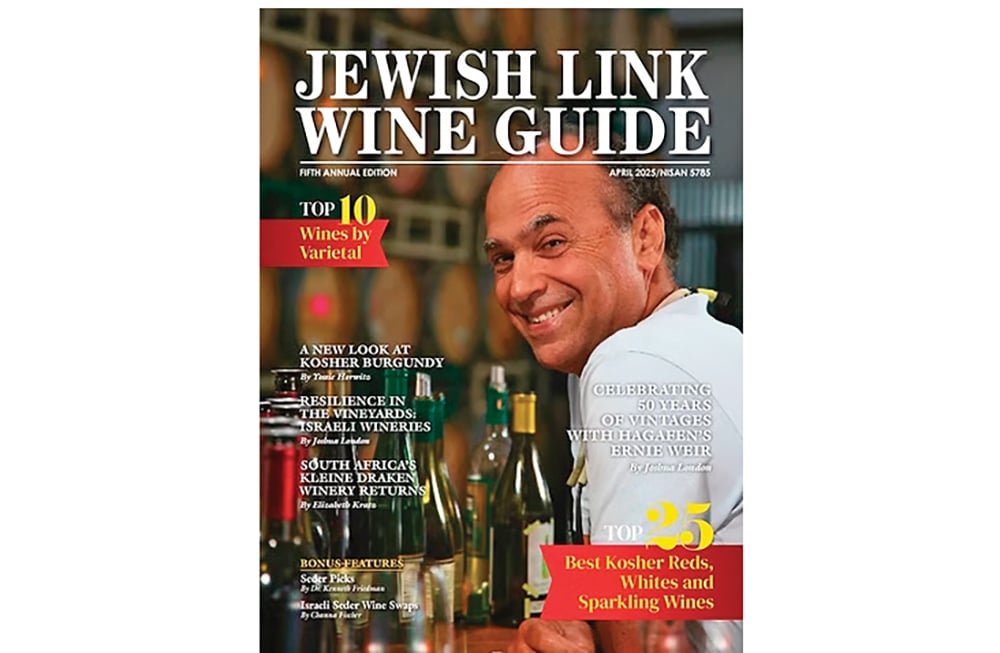
Some of us have jobs that are easy to explain and one can do so while waiting for the rabbi to make his way to the Kiddush room. And then there is Teaneck resident Dr. Jon Greenberg. The Kiddush room will have emptied out by the time you understand what it is that Dr. Greenberg does for a living.
The simple answer is that Dr. Greenberg is a science teacher at the Abraham Joshua Heschel High School. Dr. Greenberg has also taught at Indiana University, Yeshivas Ohr Yosef, and the Ramaz School. However, it is his side job that will keep you interested while others are trying to decide which kugel to eat and which Scotch tastes smoother.
When Dr. Greenberg offers people his title, he says, “Most people smile and nod their head but aren’t clear.” Frankly, they are clueless. You see, Dr. Greenberg is a biblical and Talmudic Botanist or Biblical Ethno-botanist. What is it? Dr. Greenberg explains, “Biblical ethno-botany is a way of using the tools of botany and ethno-botany to help us better understand the Torah.”
He estimates he is just one of a handful of people around today who study the topic. Dr. Greenberg gives the following example of how natural settings help us understand Torah. In Psalm 128 it says may your wife be like a fruitful vine and your children be like olive shoots around your table. The first part of the psalm seems easy to understand–have many children. The second part of the line is where the doctor’s knowledge is helpful. “In those days, every Jew had olive trees. An olive tree can live over a 1000 years, at which point its center is rotted and the tree is fragile. But the saplings which come from the olive tree surround it and protect it from the wind. Hence, the second part of the line clearly means may your children support and watch over you when you are old.
“We don’t have to choose between science and Torah. They can enrich one another and be collaborative and not adversarial,” says Dr. Greenberg. Some Torah scholars disagree and look askance at what Dr. Greenberg is doing. They feel that Torah should be studied in isolation. Dr. Greenberg has found that his studies “have illuminated Torah puzzles” and enhanced his interest in Torah.
Dr. Greenberg, who grew up with a love of hiking and nature, received his Bachelor’s degree in biology from Brown University and his Master’s and Doctorate in agronomy from Cornell University. He came to study the relationship between Torah and botany when he was at Cornell.
His interest in the subject was inspired when he went to Israel for the first time and was given the book, Nature in Our Biblical Heritage by Dr. Nogah HaReuveni. Along with Professor Yehuda Feliks, Dr. HaReuveni is one of the major modern scholars on the topic of Biblical ethno-botany. Both gentlemen were “passionate Zionists who walked around the land with a Tanach and were interested in the natural environment.”
Dr. Greenberg was interested in the topic from the first, but did not pursue it in earnest for some time as he was “busy making a living and raising kids, without much time for many personal projects or interests.” By 2008, after reading a great deal on the subject, Dr. Greenberg became convinced that “understanding the natural setting helps us understand Torah.”
Around this time, Dr. Greenberg began sharing this interest with others and set up his website (http://www.torahflora.org/). One of its features is an essay section which includes some of Dr. Greenberg’s original ideas as well as ideas gleaned from others. The essays include titles such as Drug-free Sabbath Candles which explains why cannabis (hemp) can be used as the material to make wicks for Shabbos candles. Sabbatical Potatoes reviews the laws of shmittah and how potatoes were almost lost one year but due to being planted early, were saved and available for one and all.
If you are looking for something different to do on the afternoon of Shabbos Ki Teitzei (September 6th), you can join a tour led by Dr. Greenberg. The one hour Biblical and Talmudic Botany Tour will begin at 4:00 and meet at the corner of West Englewood Avenue and Pennington Road in Teaneck. During the walk, the doctor will point out things such as a quince tree, honey locust, and azalea and share how each is relevant to Jewish history. If you have questions about the tour or the topic, or would like to learn about other tours, contact Dr. Greenberg at jon@torahflora.org
Larry D. Bernstein, a Bergen County Resident, is a freelance writer and tutor. You can find more of his writing on his website: larrydbernstein.com.
By Larry D. Bernstein











